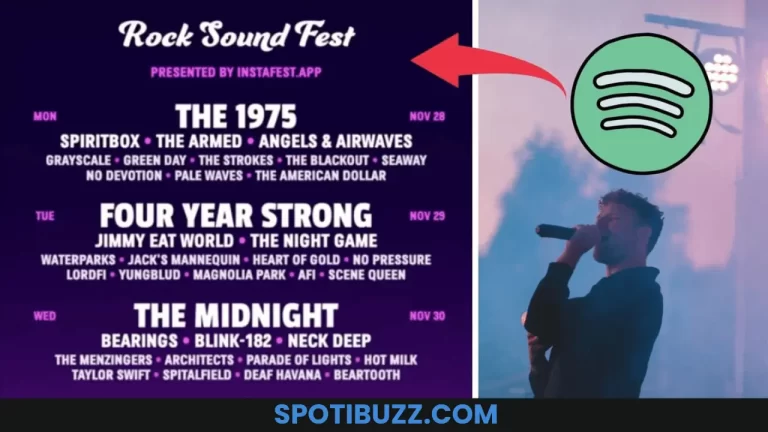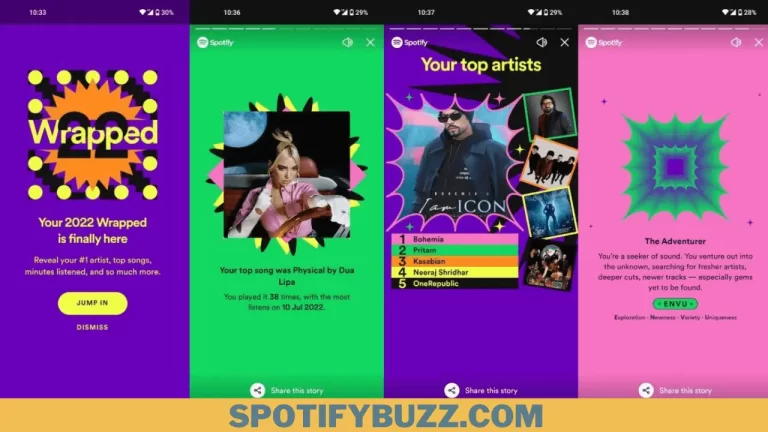Listing History of Spotify: From Startup to Streaming Giant
Discover the listing history of Spotify, the world’s leading music streaming service. Find out how it started, grew, and innovated in the music industry and how it changed how we listen to music.
Spotify, which you probably use daily for your music needs, has a remarkable history. Do you want to explore how this amazing app comes with ups and downs in its history? If yes, then you are at the right place. Here we are going to explore the listing history of Spotify. Spoty was a small startup started by two Swedish friends, Daniel Ek, and Martin Lorentzon; in 2006 and 2008, the app was officially launched in the market. The app got a hit in Europe due to its expansive library, songs, personalized recommendations, and social features. Spotify also caught the eye of major record labels, artists, and investors, who recognized its potential to transform the music business. Let’s dive into the listing history of Spotify and explore it in detail.
Launching Spotify
In exploring the listing history of Spotify, we first need to explore how Spotify was launched and the aim and purpose behind this.
- In 2006 Daniel Ek and Martin Lorentzon, two Swedish entrepreneurs who shared a passion for music and technology, formulated the app.
- They wanted to create a legal and user-friendly way to stream music online as an alternative to piracy and illegal downloads that were rampant at the time.
- They named their service Spotify, a combination of spot and identified, reflecting their vision of helping users discover new music.
- They launched their service in 2008, initially in Europe, and quickly gained millions of users who enjoyed its vast catalog of songs, personalized recommendations, and social features.
- Spotify signed licensing deals with Universal Music Group, Sony Music Entertainment, Warner Music Group, and EMI, as well as independent labels and distributors.
Challenges Faced By Spotify
While going through the listing history of Spotify, we must consider the challenges faced by Spotify in its early years as well. Spotify faced challenges such as:
- Balancing the needs and expectations of different stakeholders, such as users, artists, labels, publishers, and advertisers.
- Dealing with legal issues and lawsuits from some artists and rights holders who claimed that Spotify did not pay them fairly or transparently.
- Competing with other music streaming services, such as Pandora, Deezer, Napster, and Apple Music.
- Expanding to other markets, such as the US, required more negotiations and investments.
- Improving its technology and infrastructure to handle the growing demand and data traffic.
Growing Spotify
- Getting knowledge about the listing history of Spotify, let’s explore how Spotify expanded to other markets, such as the US, Asia, and Latin America.
- Spotify diversified its offerings, such as adding podcasts, videos, playlists, and original content, to cater to its users’ different tastes and preferences.
- Spotify partnered with major artists, labels, and platforms, such as Taylor Swift, Universal Music Group, and Facebook, to enhance its content and distribution.
Doing all this, Spotify achieved some milestones and achievements, such as:
- Winning awards, such as the Webby Awards for Best Streaming Service, in 2015 and 2016.
- Launching social features, such as Discover Weekly, Release Radar, and Daily Mixes, that helped users discover new music and share it with their friends.
- Acquiring companies such as The Echo Nest, Soundtrap, and Anchor, improved its technology and content creation capabilities.
Innovating Spotify
- Spotify went public in 2018 through a direct listing on the New York Stock Exchange, a rare and unconventional move that allowed it to avoid the fees and restrictions of a traditional IPO.
- Spotify invested in research and development, using artificial intelligence, machine learning, and data analytics to improve its service and recommendations. For example, it created features like Discover Weekly, Release Radar, and Daily Mixes that used algorithms to tailor playlists to each user’s preferences.
In the listing history of Spotify, Spotify faced some current and future trends and challenges, such as:
- Competing with new and existing rivals like Apple Music, Amazon Music, YouTube Music, and TikTok.
- Complying with regulations and laws in different markets, such as the EU’s General Data Protection Regulation (GDPR) and Digital Services Act (DSA).
- Retaining and growing its user base, especially in emerging markets like India, Africa, and the Middle East.
- Monetizing its content and platform, especially its podcasts and ad-supported tier.
Frequently Asked Questions
Final Analysis
The listing history of Spotify went through many ups and downs, from its launch in 2008 to its present status as the world’s leading music streaming service. The app faced several challenges, but the company put the app on track to progress with the right management direction. Spotify has changed the way we listen to music, and by using Spotify, you can access millions of songs and podcasts, discover new music and genres, and share your tastes and opinions with your friends and communities. You can also learn from Spotify’s history and how it has overcome obstacles and embraced opportunities to become a successful and influential company.







